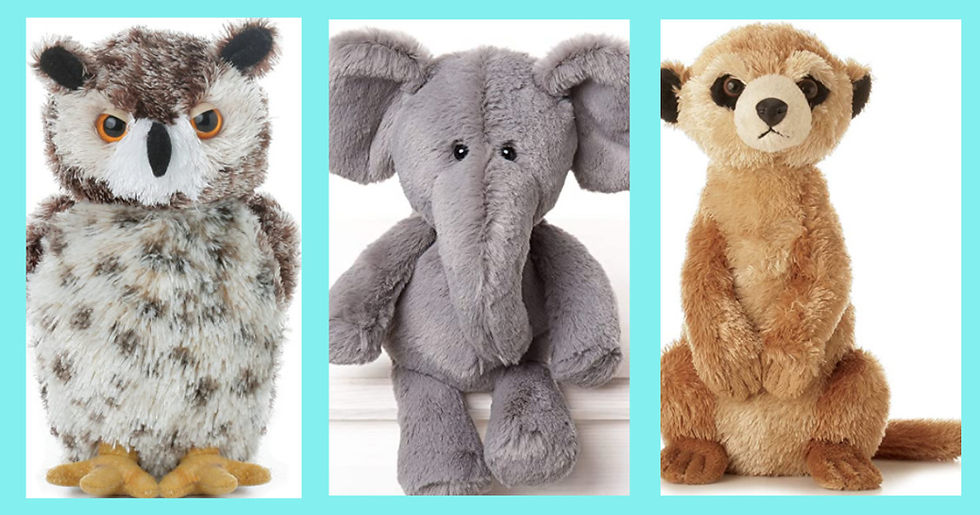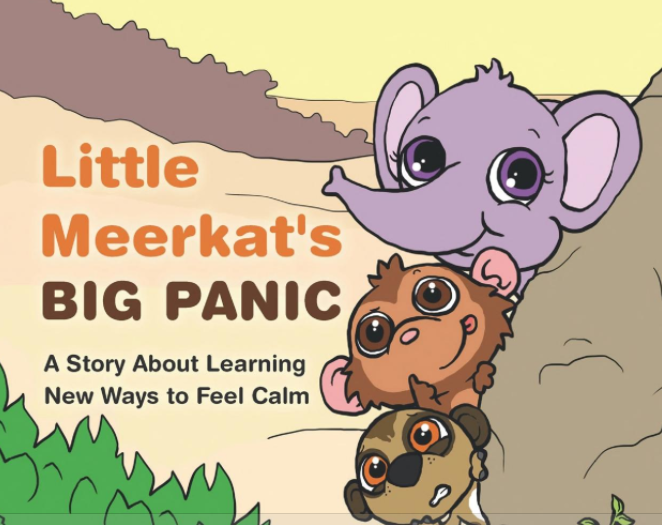How to Explain Anxiety to Children
- Suzy Wedley

- Jul 20, 2021
- 5 min read
Suitable for ages 5 - 9 (ish)
Just like with adults, it's totally normal for children to feel anxious sometimes, but it becomes a problem when it overwhelms or gets in the way of normal living. Anxiety can be scary for anyone experiencing it for the first time so understanding it is a vital part of learning to cope with it.
When I first meet a child who is struggling with anxiety I explain to them the evolutionary origins of anxiety, why it causes their somatic (physical) symptoms and tell them that it is a totally natural state that just sometimes gets out of control. The relief can be palpable as the child realises that a) they are not freaks, and b) they can do something about this.
One little girl turned to me and said in a very heartfelt way: "I wish somebody had told me this before!"
The thing about anxiety is that, even if you suffer from it, it can be difficult - like all mental health conditions - to explain to a child in terms they can understand. To do that, I compare parts of the brain to other things, often animals, that the child can relate to.
The following explanation is for roughly 5-9 year-olds but you know your child best so, if your child is near the top of this age range, read through the teen one too, think about which makes more sense to you and which you think will make the most sense to them. Feel free to change the animals if you can think of one which would be better for your child (for instance if they have never come across a meerkat you might want to choose a different animal such as a dog) so long as it makes sense in the context of the explanation.

The important parts of the brain to explain anxiety to children are:
The brain stem (see the older children's explanation)
The amygdala
The hippocampus
The prefrontal cortex
For younger children to keep it simple we just think about 3 of them, and we can even drop the hippocampus for the youngest of children:
The Amygdala
The adult explanation: The amygdala is part of the limbic system which is a group of structures linked to processing emotion. The amygdala is linked to processing fear and the detection of threats. It is a simple structure and therefore works very quickly to respond quickly to, say, an attacking bear. When the amygdala becomes aware of a threat (either a physical one or an internal one such as a worry) it initiates the fight or flight response to ready your body to either attack the bear (fight) or run from it (flight) in order to keep you safe.
The child's explanation: The amygdala is a lot like a meerkat - when you see a meerkat on the telly you will often see most of the meerkat group resting or playing or eating, but there's always a meerkat standing up on its back legs looking around - it's keeping a watch out for danger.
Your amygdala is like a meerkat because it's always on the lookout for danger, or things that worry it. When a real meerkat sees a predator, it will either attack the predator or run away from it. Just like a real meerkat, when your meerkat part of the brain is upset it can make you feel like hitting something or running away. It can make your tummy hurt or give you a headache or give you butterflies in your tummy.
The Hippocampus
The adult explanation: The hippocampus is also part of the limbic system. It is involved in the formation of new memories and with learning and emotions. When a particular smell triggers a memory, that's because your hippocampus encoded them together. When just the thought of an occasion like Christmas gives you a sudden feeling of joy, that's because your hippocampus saved the memory of the day and entwined it with the emotions. When someone has PTSD, and a random bang makes them react as if they were back in the car accident which was the cause of it, that's because the memory has been linked so strongly to the emotion. The memory, or sensations that have been linked to it, can trigger your fight or flight response in order to get you ready to deal with potential danger.
The child's explanation: The hippocampus is the memory part of the brain and we compare it to an elephant because 'elephants never forget'. The elephant part of your brain doesn't just remember facts like 2+2 but it also remembers feelings and things that happen to you.
Imagine you are a new child coming into school for the first time. You walk into the classroom and trip over dropping your lunch all over the floor. Everyone turns around and stares at you. You feel embarrassed and upset. Your elephant saves this memory and how you felt. The rest of the day at school was great, and you're excited to go back, but the next day, as you approach the classroom, your elephant reminds you that you fell over by bringing those feelings back up. It's trying to remind you not to trip over again and save you from feeling that way again.
When your elephant brings up a memory (even if you don't notice it doing it) of a time that made you feel uncomfortable it can make the meerkat jump into action and warn you of danger.
The Prefrontal Cortex
The adult explanation: The prefrontal cortex (PFC) is part of the frontal lobe and is responsible for regulating behaviour and planning activities such as how to act towards other people. It's part of the thinking part of the brain which is much more complex than the survival areas and therefore works more slowly. During times of danger, it is bypassed and signals are sent instead to the survival part of the brain.
When you go into the fight or flight response the brain wants to act quickly (in case you're about to be eaten by that bear) so activity in the thinking part of the brain is reduced making it hard to think clearly while anxious. As the PFC has a part to play in regulating emotions when your child is in fight or flight mode then it is difficult for them to think and reason so they need to calm down first before you can talk to them about the problem.
The child's explanation: The prefrontal cortex is a lot like a wise owl - it's really good at thinking about how to do things, and about feelings, but it is slow and careful and it likes peace and quiet. When your meerkat gets upset and starts squeaking to warn you of danger, it can make your owl get frightened and fly away. This means that you can't think clearly any more. This is difficult if you are getting anxious about a spelling test because you need your thinking brain for that!
You need to use some calming tools to take control of your meerkat again so your owl will come back and you can think again.

You can use toys such as those above to help them understand, role-playing the meerkat watching for danger and the owl flying off when the meerkat starts squeaking.
You may be surprised by how much your child understands - to test this it's helpful to ask the child to explain it to an adult - if they can explain it then they probably understand it!
You can also complement it with books such as Little Meerkat's Big Panic.

If you are worried about your child or teen, talk to your GP or school.
Please don't forget to like and share this post so other parents and kids can benefit from it.
Also, follow my Facebook or Twitter pages, or subscribe below, so you don't miss future posts







Comments